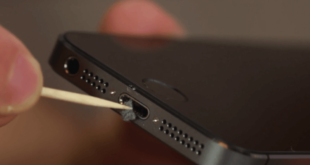If you have a Pocophone F1 android Smartphone and you want to Upgrade POCO F1 to Android Q safely then you are in the right place. This simple article will guide you to Upgrade POCO F1 to Android Q with LineageOS 17.1 (Official).
The Pocophone F1 comes with Chipset Qualcomm SDM845 Snapdragon 845 (10 nm), CPU Octa-core (4×2.8 GHz Kryo 385 Gold & 4×1.8 GHz Kryo 385 Silver), GPU Adreno 630, Internal 64GB 6GB RAM, 128GB 6GB RAM, 256GB 8GB RAM, Main Camera 12 MP, f/1.9, 1/2.55″, 1.4µm, dual pixel PDAF, 5 MP, f/2.0, (depth), and Selfie Camera 20 MP, f/2.0, (wide), 1/3″, 0.9µm.

Android 10 is Google’s 10th version of Android OS with plenty of new features and system UI changes. Google doesn’t come with any dessert item name for the new Android version this time and that’s a good move. With the new released Android 10 source code, the Lineage team has started working on Lineage OS 17 for all the supported device.
Why Lineage 17.1 and not 17.0?
Android 10’s source code made its way to AOSP in September 2019, and the LineageOS team has been hard at work to bring forward their ROM and its features to the new Android version base. AOSP, though, had undertaken massive refactoring in certain areas, which made porting over take longer than anticipated. AOSP also introduced features like the new Permissions Hub, which conflicted with the custom ROM’s PrivacyGuard feature, forcing them to drop it. Both of these changes meant that the team had to work harder and take more time for bringing up the ROM as a whole to Android 10.
Meanwhile, the December 2019 Android Security Bulletin was released by Google, and the LineageOS team decided to rebase on the more feature-filled Google Pixel 4/4XL tag of AOSP. Owing to this, the team has also decided to jump up on the subversion, going from 17.0 to 17.1. For the future too, if there is any large scale rebasing undertaken onto a different tag, the team will jump up on the subversion number.
As a consequence of this jump, the team will be locking all Lineage-17.0 branches to contributions on their Gerrit, and abandoning existing 17.0 changes. Developers are still free to cherry-pick changes to 17.1, though.
Features in LineageOS 17.1
LineageOS 17.1 brings over several new features to the ROM family:
- New partial screenshot UI that lets you hand-select smaller parts of your screen and edit the screenshots.
- New adapted ThemePicker app from AOSP, with support for the usual range of accents, font change, icon (both QuickSettings, and Launcher) shape, and icon resource changes (eg. changing the shape of the Wi-Fi/Bluetooth icons).
- Use fingerprint sensor to hide and protect apps within Trebuchet Launcher
- Merge October, November, December 2019, January 2020, February 2020, and March 2020 security patches.
- Wi-Fi Display is available once again.
- Support for on-screen fingerprint sensors (FOD) added.
- Support for pop-up and rotating cameras added.
- WebView updated to Chromium 80.0.3987.132.
- ROM is currently based on AOSP’s android-10.0.0_r31 tag, which is the Pixel 4/4 XL’s tag.
Further changes
Lineage Recovery
Lineage is also making the switch to Lineage Recovery as the defacto solution to install LineageOS. Lineage Recovery will be built by default for all officially supported devices. The team mentions that this change was done purely to streamline their own processes and not to dissuade users away from other custom recoveries. Device maintainers retain the freedom to recommend alternative recovery on their device’s Wiki page alongside full instructions for usage.
AOSP’s Permission Hub and LineageOS’s PrivacyGuard
We’ve talked about these changes in the past, and now the changes are finally here. LineageOS 17.1 dropped support for the implementation of a homemade PrivacyGuard that supports the AOSP Permission Hub because the team cannot port the PrivacyGuard framework to Android 10. Google has not released a Permission Hub with Android 10, but the code for that still exists in AOSP. So, the Lineage team cut it off and now presents it as a solution because it is claimed to be almost equal in features, but contradicting in an effort to coexist with PrivacyGuard.
Rooting — no addonsu binary support
As a byproduct of the removal of PrivacyGuard and the switch over to Permission Hub, the addonsu binary that was usually offered as a simple root access solution is no longer feasible, as we had informed before. Users interested in root have the option to use ADB root, or flash compatible third-party solutions such as Magisk. The team clarifies that this does not mean that any particular third-party solutions are endorsed as officially supported — so you still need to be mindful of the root solution working harmoniously with your ROM.
Deprecation of Styles API
The Styles API is also now getting deprecated in favor of AOSP’s ThemePicker app. The team claims complete feature parity, and even feature superiority with ThemePicker.
How To Install POCO LineageOS 17.1 on POCO F1 (beryllium)
First, unlock the POCO F1 bootloader and make sure you have installed latest TWRP Recovery.
Pre-Requirements:
- This is Android 10 based Lineage OS 17 file and supported for Pocophone F1 (beryllium) only.
- Make sure your device has more than 50% battery for a smoother process.
- Make sure you have taken a backup of your important data. In case anything goes wrong, you can easily restore all the data. *Opsional
Download Links:
- Download LineageOS 17.1
- Download latest GApps 10.0 | OpenGApps (Mirror) (Select ARM64)
Instructions to Install:
- Make sure that you have downloaded all the required files on your device.
- Now transfer the downloaded files to the internal storage of your device.
- Now reboot to the TWRP recovery by holding your power and volume down buttons together for a few seconds.
- Select “Wipe” from TWRP main menu and Select Advanced Wipe > Select the data, system, vendor, cache. Then “Swipe” on the bottom of screen.
- In TWRP Recovery menu, tap on Install button > Install Image > Select the TWRP Image file from the location where you have moved earlier.
- Go back to TWRP main menu, tap on “Install” and select the ROM .zip file that you transferred to your device in Step 1.
- After selecting the .zip file, do “Swipe to Confirm Flash” on the bottom of screen to begin the custom ROM installation process. This may take some time.

- Once your ROM is successfully flashed, you’ll see “Wipe cache/dalvik” option, select it and then do “Swipe to wipe” on bottom of screen.
- Now flash the Gapps file similarly like you flashed the ROM file.
- Finally, after flashing both ROM and Gapps, reboot your phone into a new system. Wait for it, as the boot process will take a few minutes.

- Finish!!
Well maybe it’s just this tutorial about Upgrade POCO F1 to Android Q with LineageOS 17.1 (Official). I would expect to see more articles. Hopefully the tutorial is useful. If you want to request articles or provide suggestions & criticism please contact me at Contact Me. If anyone wants to ask please leave a comment, and do not forget like Facebook fanpages genkes.

 Genkes How To and Reviews Technology
Genkes How To and Reviews Technology


